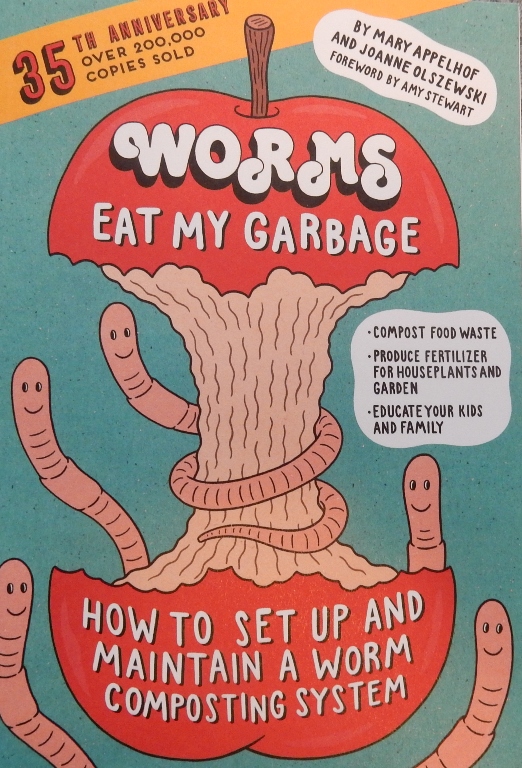
The first time I learned about compost piles was when a homesteading friend gave me a subscription to Rodale’s Organic Farming and Gardening magazine while we were still living in New York City. We had a tiny backyard in Manhattan, but we never did very much with it because of our fear of heavy metals in the soil. Adverse health effects caused by heavy metals are a real threat if you grow edibles.
We moved to Heath 37 years ago. On our 60 acres we had more than enough room and material to become serious composters. Composting For a New Generation: Latest Techniques for the Bin and Beyond by Michelle Balz (Cool Springs Press $22.99) gives a refresher course in the basic science of composting. Balz reviews then reviews old techniques and brings us fascinating new techniques.
This comprehensive new book tempts you with the benefits of composting from improving your soil, saving money on fertilizers, benefitting the environment and maybe even making you a happier person. Did you know that Mycobacterium vaccae, found in soil and compost piles acts as a natural antidepressant? These bacteria enter your body through your breathing and through your skin.
Balz has a degree in Environmental Studies and worked as a “solid waste (garbage) professional before devoting herself to all manner of composting which she explains in her book. If you raise chickens, brew beer, make coffee, have a clothes dryer or trees you have extra riches for your compost pile. Who knew spent grain left from beer brewing, or coffee grounds really got the action going in a compost pile?
You can make compost just by layering brown matter like leaves, straw, shredded paper and sawdust with a lesser amount of vegetable scraps, chicken manure, and things like plant trimmings in a casual pile. However, for making larger amounts of compost more easily, Balz gives clear instructions for building wooden compost bins, wire leaf bins, a compost tumbler and other items. I was really taken with the simple aerator which would help break down raw materials more quickly. Air is vital to good compost making.
Balz also suggests some unusual ways to compost. She gives directions for making bokashi, a pickling process, as well as compost tea, vermicomposting which is composting indoors with worms, and trench composting. I was fascinated with her explanation of an African Keyhole Garden which puts a compost pile in the center of a raised bed. Rains will wash the nutrients from the decomposing compost pile throughout the garden.
Balz also describes hugelkultur, a permaculture technique, which is about composting wood. We have our own hugelkultur project at the back of our garden, and I have written about that before.

Balz focuses on some new ways of making compost, but this is the 35th anniversary of the classic book Worms Eat My Garbage by Mary Appelhof and Joanne Olszewski. The subtitle is How to Set Up and Maintain a Worm Composting System and that system is alive and well at the Four Corners School where several classrooms have simple worm bins filled with damp newspaper and worms that are making good compost. In the spring the children will be planting seeds in potting soil amended with that vermicompost.
Think of all the questions children, or any of us might have about worms. Do they have a mouth, or teeth to eat all that lettuce? Do they have eyes? Do they have brains? All will be revealed in Worms Eat My Garbage.
Along the way the children, and other new vermicomposters, will learn all about worm anatomy, worm mating, cocoons, and baby worms.
Vermicompost is a term that encompasses not only the worm castings (worm manure) but also the rotting bedding and bits of kitchen scraps left as the worms munched their way through the day. The various steps in the making of vermicompost and the harvesting process are explained fully, along with estimations of the time it will take from set up to harvest.
The children use a simple small plastic bin in their classroom, but there are a variety of commercial bins that come in various sizes, accommodating different amounts of bedding and food scraps as well as different numbers of worms. I have known people to keep their worm bins in the kitchen or nearby, and many keep larger worm bins in the basement.
Vermicompost is powerful stuff, but each harvest will give you a limited amount so it is best to use it carefully. It is very useful when planting seeds or transplanting your spring starts. Prepare your little row and sprinkle the length of the row with the vermicompost, or put a small handful in each hole for transplants.
If you are a gardener who likes to create soil blocks for seed starting vermicomost is an ideal additive to the potting soil. Plant your seed in the vermicompost enriched seed block and when the seedling is of sufficient size put the whole block into its planting hole in the garden. It will already have gotten off to a good start.
Fully finished compost and vermicompost can also be used for top dressing in houseplants. Choose your technique and begin!
Between the Rows March 3, 2018